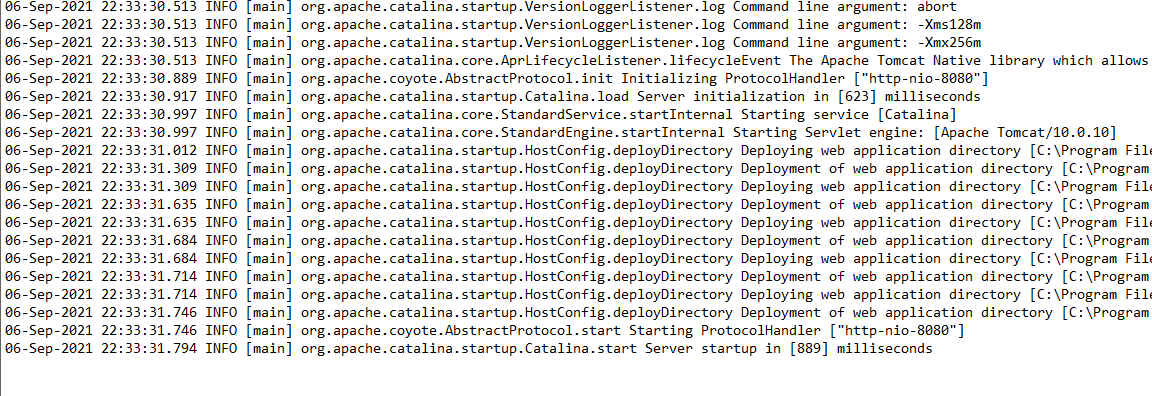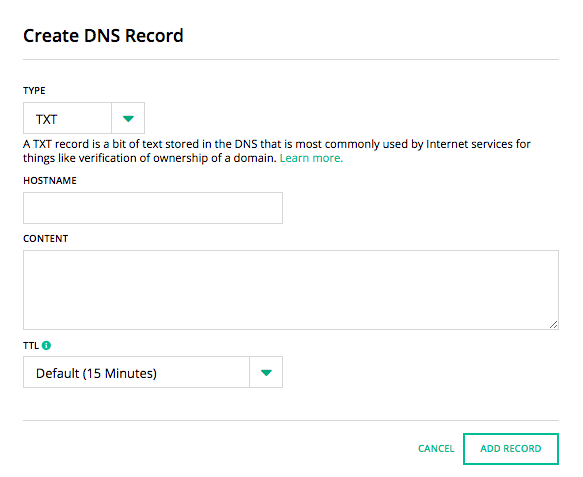
SSL and TLS are two different types of encryption protocols. Both types use different encryption algorithms to encrypt data. Although both protocols are very useful, there are important differences. Let's take a closer look at some of their main differences.
Authentication
SSL and TLS are two protocols that use client authentication to limit access to authenticated users. This authentication helps prevent attacks from external sources. Although it is widely accepted and used, it does require client certificates to be installed on clients machines and applications. This can be time consuming for system administrators and is not particularly intuitive for end users.
These two protocols use different cipher sets to encrypt data. TLS uses more powerful and sophisticated ciphers. TLS also boasts perfect forward secrecy. They also use different methods to transmit warning and error messages. TLS uses encrypted alert messages, which are not read by anyone except the intended recipients.

Encryption
SSL and TLS have a fundamental difference in how they encode data. SSL uses asymmetric cryptography, which is a type algorithm to protect data transmitted over a network. This type of encryption protects data with a private key and shared secret. This type of encryption is secure and reliable because the servers and clients negotiate these details before sending any data.
TLS1.0 has several vulnerabilities. The vulnerability known as BEAST was one of them. The BEAST exploit takes advantage a well-known TLS 1.0 flaw called cipherblockchaining. An attacker can force a server into using weaker encryption keys of 512-bit.
Certificates
TLS certificates and SSL certificates may seem confusing, especially for those not familiar with internet protocols. TLS is an older security protocol, while SSL certificates offer the same level of encryption. You can read more about both protocols to find out which one is best for you site.
SSL certificates and TLS certificate are digital certificates issued through a certificate authority. They give the client a public key cryptographic key which is needed to establish a secure connection. The certificate authenticates the certificate authority to be the owner the public key.

Implementation
SSL and TLs are security protocols that provide encryption of internet traffic. These protocols are built on cryptographic keys that are calculated over Protocol messages. They can also be used to verify data integrity. The session keys are used by both the client and server to secure the connection. If both parties agree that encrypted data will be exchanged, the connection is secure.
Both SSL and TLS are widely implemented in free and open source software projects. OpenSSL or CyaSSL are common implementations. These libraries can be embedded into most popular web browsers. Many popular software programs also support SSL/TLs using these libraries. These libraries support SSL/TLS over TCP, which is a reliable datagram oriented transport protocol.
FAQ
How To Make A Static Web Site
There are two options available to you when building your first static website.
-
Content Management System, also known as WordPress. WordPress is available as a download. You can then use it to build an important website.
-
A static HTML website is created by you. This is easy if you know HTML.
Consider hiring an expert to build your large website.
Start by choosing option 2.
Which platform is best for designing a website?
WordPress is the best platform to design a website. It comes with all the tools you need for creating a professional website.
Themes are easy to install and customize. There are many themes to choose from online.
Plugins allow you to add functionality, such as adding social media buttons or creating contact pages.
WordPress is very user-friendly as well. You don't have to know HTML code to change your theme files. You just need to click on the icon and choose what you want to modify.
There are many options, but WordPress is the best. Millions of people use it every day.
How much does it cost to create an ecommerce site?
This will depend on whether you are using a platform or a freelancer. eCommerce sites typically start at around $1,000.
Once you've chosen a platform you can expect to pay $500-$10,000.
The average cost of a template will not exceed $5,000. This includes any customizing you do to your brand.
How do I create my own website?
It all depends on which type of website it is. Are you trying to sell products online, create a blog or build a portfolio of websites?
It's possible to make a website that is essential using HTML and CSS. While it's possible to create a simple website using HTML and CSS, most web developers recommend using a WYSIWYG editor such as Dreamweaver or Frontpage.
If you don't have experience designing websites, hiring a freelance developer might be the best option. They can help you build a website customized to your needs.
Freelancers can charge a flat fee or an hourly rate. The amount of work they do within a certain time frame will affect the cost of hiring a freelancer.
One example is that some companies charge $50-$100 for an hour. For larger projects, you'll typically get a higher rate.
In addition, many freelance websites list available jobs. You can search there before you contact potential developers directly.
WordPress: Is it a CMS or not?
The answer is yes. It's called a Content Management System. Instead of using Dreamweaver or Frontpage, a CMS lets you manage your website content directly from your web browser.
WordPress's best feature is its free pricing! Hosting is all you need, and it's usually free.
WordPress was originally designed to be a blogging platform. However, WordPress now offers many options including eCommerce sites and forums, membership websites, portfolios and portfolios.
WordPress is simple and easy to install. To install WordPress, you will need to download the installer file from their website. Once it is downloaded, upload it to your server. Then, you simply visit your domain name through your web browser and log in to your new site.
After installing WordPress, register for a username/password. Once you log in, you will be able to access your settings from a dashboard.
From here, you can add pages, posts, images, links, menus, widgets, and plugins. This step may be skipped if you feel confident editing and creating content.
But if you'd rather work with someone, you can hire a professional website designer to handle everything.
How do I choose the right domain name?
It is crucial to choose a great domain name. Without a great domain name, people will not know where to find you when they search for your product.
Your domain name should be concise, memorable, unique, relevant, and easy to remember. You want it to be something people will type into their browser.
Here are some tips for choosing a domain name:
* Use keywords relevant to your niche.
* Avoid using hyphens (-), numbers and symbols.
* Don't use.net or.org domains.
* Avoid using words that are already taken.
* Avoid generic terms like domain or website.
* Check to make sure it's there.
What is the cost of building a website?
This question will depend on your goals for your website. Google Sites is a free service that may be available if you only want to publish information about yourself and your business.
However, if visitors are serious about coming to your site, they will be willing to pay more.
The most common solution is to use Content Management Systems (like WordPress). These programs enable you to create a website in no time. And because third-party companies host these sites, you won't need to worry about getting hacked.
Squarespace is another way to create a website. You can choose from a range of plans, ranging in price from $5 to $100 per monthly depending on what you need.
Statistics
- It's estimated that chatbots could reduce this by 30%. Gone are the days when chatbots were mere gimmicks – now, they're becoming ever more essential to customer-facing services. (websitebuilderexpert.com)
- It enables you to sell your music directly on your website and keep 100% of the profits. (wix.com)
- In fact, according to Color Matters, a signature color can boost brand recognition by 80%. There's a lot of psychology behind people's perception of color, so it's important to understand how it's used with your industry. (websitebuilderexpert.com)
- When choosing your website color scheme, a general rule is to limit yourself to three shades: one primary color (60% of the mix), one secondary color (30%), and one accent color (10%). (wix.com)
- Did you know videos can boost organic search traffic to your website by 157%? (wix.com)
External Links
How To
How can I get started as a UI designer?
There are two paths to becoming a UI design:
-
You can complete school to earn a degree for UI Design.
-
You can go freelance.
For you to be able to finish school, you must attend college or university. This includes business, psychology and computer science.
You can also take classes at community colleges or state universities. Some schools offer programs for free, while others require tuition fees.
After graduation, you will need to find employment. If you choose to work for yourself, you must build your client base. It's important to network with other professionals, so they know you exist.
There are many opportunities to intern for companies that specialize on developing web applications. Many companies hire interns to gain experience before hiring full-time employees.
You will find more jobs if you have a portfolio that showcases your work. Your portfolio should include work samples as well as details of the projects that you have worked on.
It's a great idea to email your portfolio to potential employers.
Freelancers need to promote themselves. You can post your services on job boards, such as Guru, Indeed, Guru or Upwork.
Freelancers are often assigned by recruiters posting job openings online. These recruiters seek qualified candidates to fill open positions within certain industries.
These recruiters typically provide the candidate with a project brief outlining the position's requirements.
While freelancers aren't required to sign contracts for a long time, they can still be paid. You should negotiate an upfront payment if your goal is to move forward.
Many designers prefer to work directly with clients rather than through agencies. Although this might seem like a great idea, many people lack the necessary skills.
Agency workers have a deep understanding of the industry in which they are working. They can also access specialized training and resources that will allow them to produce top-quality work.
Agency workers also receive higher hourly rates.
However, the disadvantage of working with an agency is not having direct contact with your employer.
A UI designer must be self-motivated, creative and flexible.
Excellent communication skills are also required.
UI designers are responsible for designing websites by creating user interfaces (UI) and visual elements.
They are also responsible in ensuring that the site meets all users' requirements.
This involves understanding what information visitors need and how the site should function.
To create wireframes, UI designers can use a variety of tools. Before they begin designing, wireframing allows them to visualize the page's layout.
There are many wireframe templates available online. Anyone can create their own wireframes.
Some designers are solely focused on UI design while others blend UI design and graphic design.
Photoshop is used by graphic designers to edit images.
Then, they use Adobe InDesign for layout and page design.
Photographers capture images using digital cameras or DSLRs.
The photos are then uploaded into a photo editing program. Here they can add captions, filters, or other effects.
After the shoot, the photographer saves and archives the image in a format compatible with website.
It is important to take into consideration all aspects of the design process when building a website.
This includes research, planning, wireframing, prototyping, testing, coding, content creation, and publishing.
Research - It is crucial to conduct extensive research before beginning a new venture.
Planning - Once you've completed your research, you'll want to begin developing a plan.
Wireframing – A wireframe is a preliminary sketch or drawing of a webpage or application.
Prototyping – Prototypes are used to verify that the final product is consistent with the original vision.
Testing - Multiple rounds of testing should be done on the prototype to make sure it works properly.
Coding: Coding is the process of writing code for computers.
Content Creation: Content creation can include everything from copywriting to managing social media profiles.
Publishing means uploading files onto a server and making the site accessible.
You will be required to study about other projects in order to work as a freelance UX/UI design.
Some companies require only wire frames, others require complete prototypes.
Depending upon the type and scope of the project, you may be asked for specific tasks.
If you are hired to create wireframes for a company, you may be expected to produce several wireframes each time.
If you're hired to create a complete prototype, you may be required to develop a fully functional version of the site.
It doesn't really matter what project you're working on, good interpersonal skills are vital.
Since most clients hire freelancers based on referrals, you must build solid relationships with potential employers.
In addition, you must be able to communicate effectively both verbally and in writing.
A portfolio is an important tool in any freelancer's arsenal.
It showcases your work and demonstrates your ability to deliver high-quality results.
You can do it online with a professional portfolio.
You can find similar websites to yours online to help you get started.
These sites can be searched to determine which services they offer.
Once you identify what you think are the best practices, go ahead and adopt them.
It's also useful to include links from your portfolio in your resume.